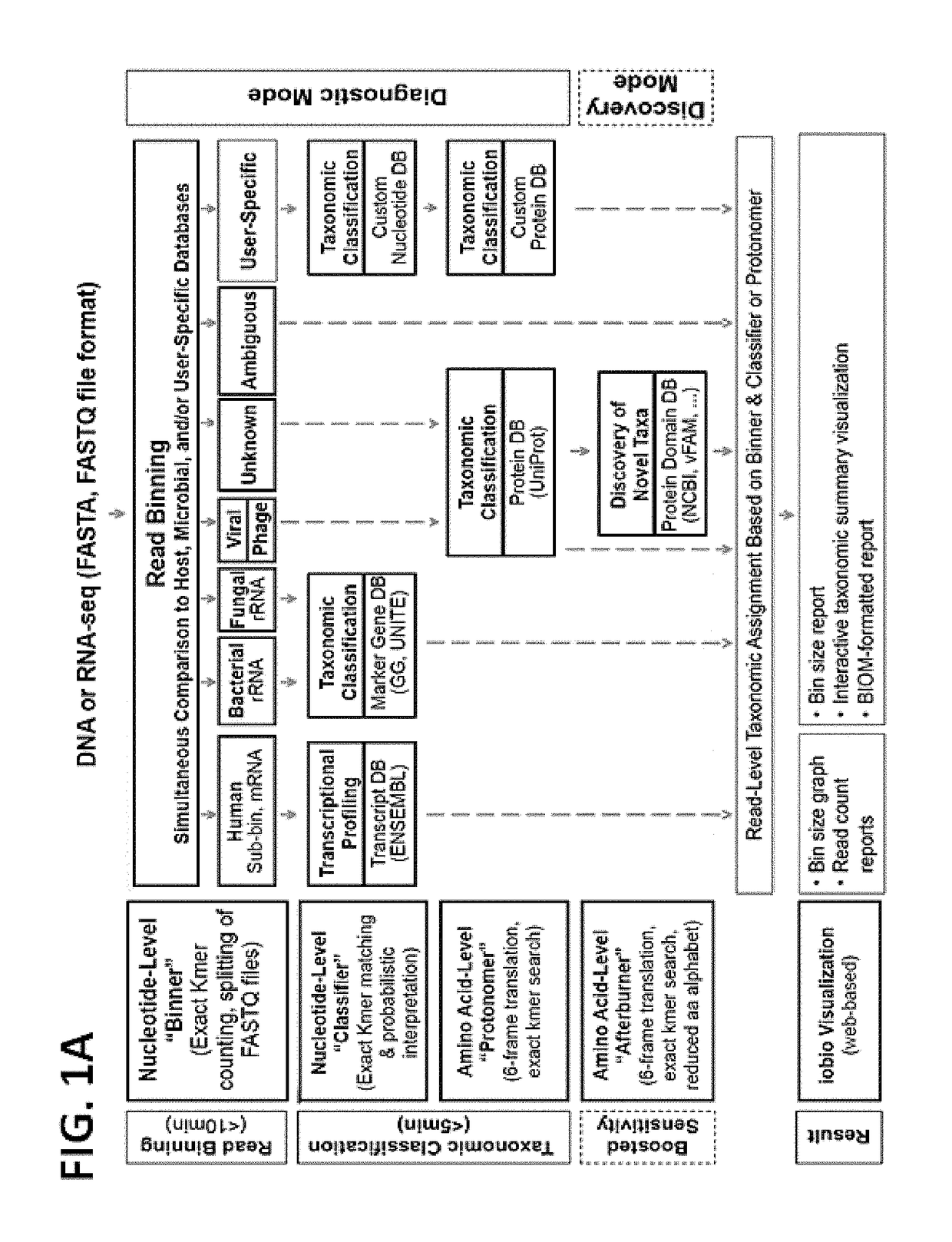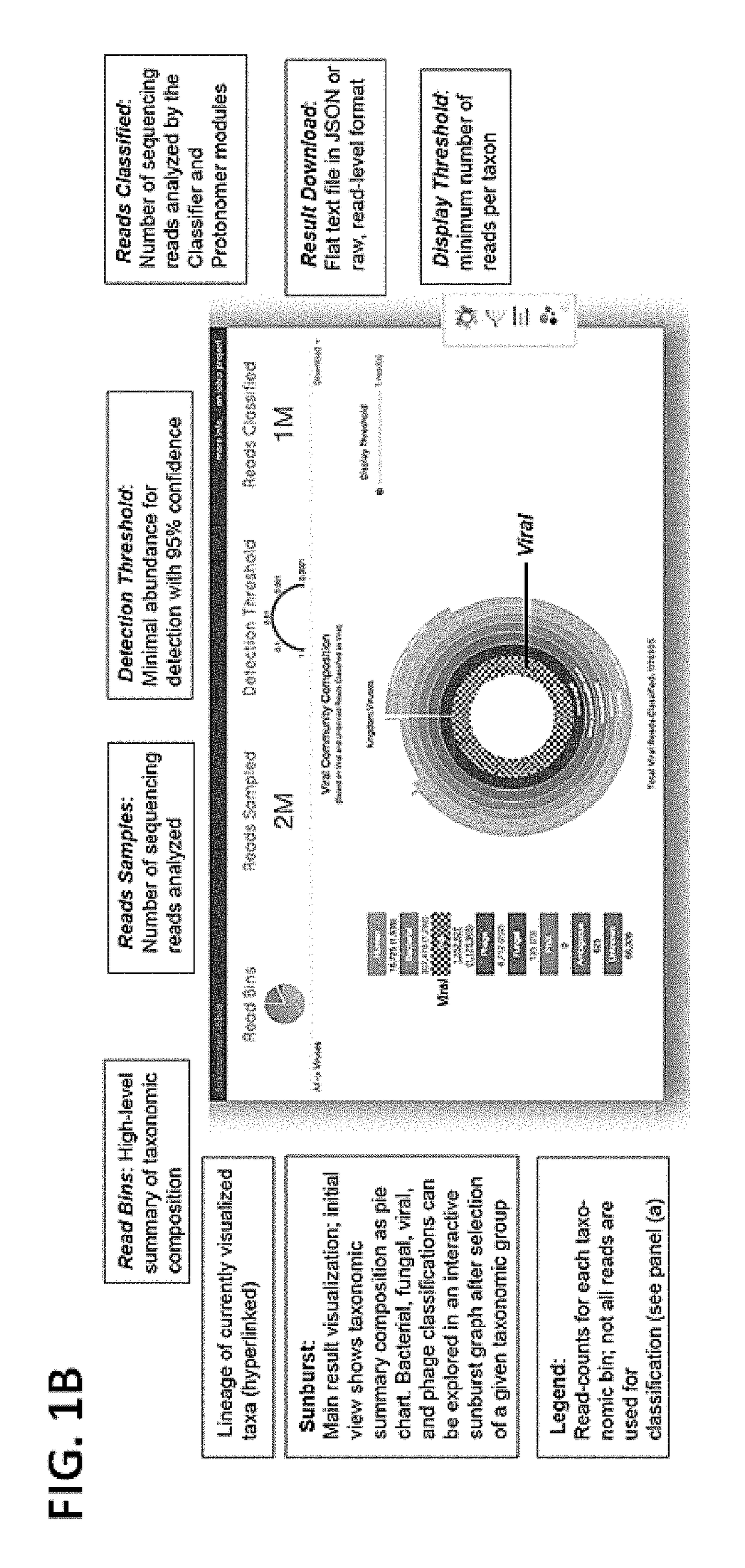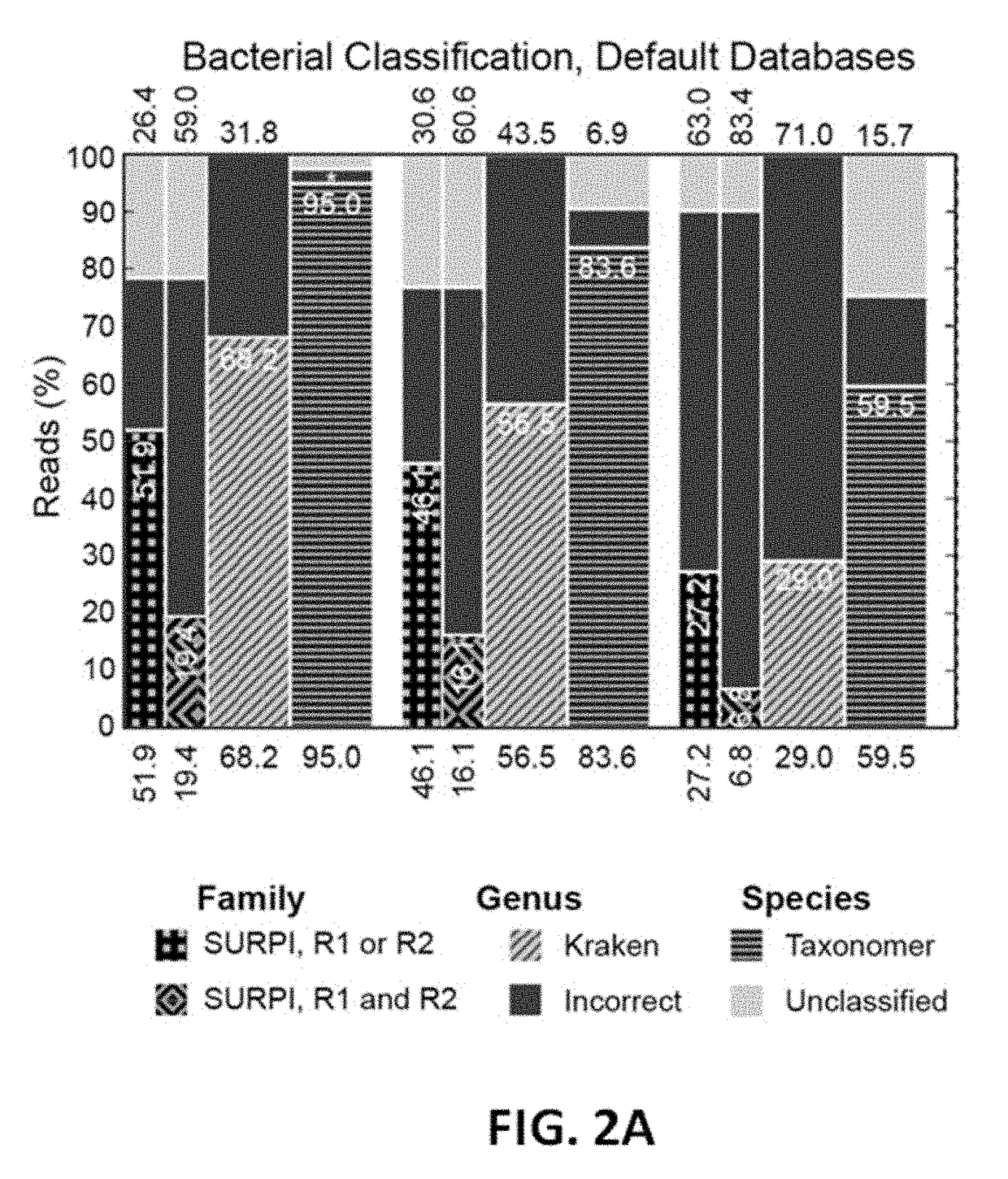Methods and systems for multiple taxonomic classification
a taxonomic classification and method technology, applied in the field of methods and systems for multiple taxonomic classification, can solve the problems of inability to enable diagnostic panels, time-consuming, and difficult analysis of sequencing data, and achieve the effects of convenient use, accurate and computationally efficien
- Summary
- Abstract
- Description
- Claims
- Application Information
AI Technical Summary
Benefits of technology
Problems solved by technology
Method used
Image
Examples
example 1
stem Architecture
[0121]An example system in accordance with an embodiment of the disclosure was constructed. An overview of the structure and user interface of this system is illustrated in FIGS. 1A-B, and is referred to in these examples as Taxonomer. For the various analyses in these examples, raw FASTQ files were the input for Taxonomer, which comprised four main modules. The ‘Binner’ module categorized (“bins”) sequencing reads into broad taxonomic groups (e.g. host and microbial) followed by comprehensive classification at the nucleotide (‘Classifier’ module) or amino acid-level (‘Protonomer’ and ‘Afterburner’ modules). In this example system, the ‘Binner’ module used exact k-mer counting for read assignment with a predefined minimum threshold. The ‘Classifier’ module applied exact k-mer matching and probabilistic taxonomic assignment for host transcript expression profiling and classification of bacteria and fungi at the nucleotide level. The ‘Protonomer’ module applied 6-fram...
example 2
b-Service and Implementation
[0128]In this example, a web-service and implementation for Taxonomer as described in Example 1 are described. Complex metagenomic data can be processed quickly and effectively interpreted through web-based visualizations (FIG. 1B illustrates such an interface).
[0129]As reads were being streamed to the analysis server, a pie chart was presented summarizing the results of the binning procedure. When one of the bacterial, fungal, viral, or phage bins of the pie chart was selected, the results of the Classifier / Protonomer modules were displayed in a sunburst visualization.
[0130]Additional information was provided at the top of the web page about how many reads were sampled, the number of reads classified, and the detection threshold. The detection threshold informs a user about how abundant a particular organism must be in order to be detected with the number of reads sampled, thereby providing an indicator of the sensitivity of detection in the sample. In a...
example 3
Construction for Taxonomer
[0131]In this example, construction of databases for Taxonomer as described in Example 1 are described. The Classifier and Protonomer databases are modular, consisting only of multi-fasta files with a ‘parent tag’ on their definition lines. These tags describe each reference sequence's immediate phylogenetic parent-taxon.
[0132]Bacterial classification was based on a marker gene approach. The marker genes were 16S rRNA gene and genes from the Greengenes database (reference set with operational taxonomic units, OTU, clustered at 99%, version 13_8, FIG. 19). This reference set contained 203,452 OTU clusters from 1,262,986 reference sequences. The taxonomic lineage for each OTU was used to create a hierarchical taxonomy map to represent OTU relationships. To support the OTU ‘species’ concept, the taxonomy was completed for ranks in the taxonomic lineage that had no value. Unique dummy species names from the highest taxonomic rank available were used to fill emp...
PUM
 Login to View More
Login to View More Abstract
Description
Claims
Application Information
 Login to View More
Login to View More - R&D
- Intellectual Property
- Life Sciences
- Materials
- Tech Scout
- Unparalleled Data Quality
- Higher Quality Content
- 60% Fewer Hallucinations
Browse by: Latest US Patents, China's latest patents, Technical Efficacy Thesaurus, Application Domain, Technology Topic, Popular Technical Reports.
© 2025 PatSnap. All rights reserved.Legal|Privacy policy|Modern Slavery Act Transparency Statement|Sitemap|About US| Contact US: help@patsnap.com



